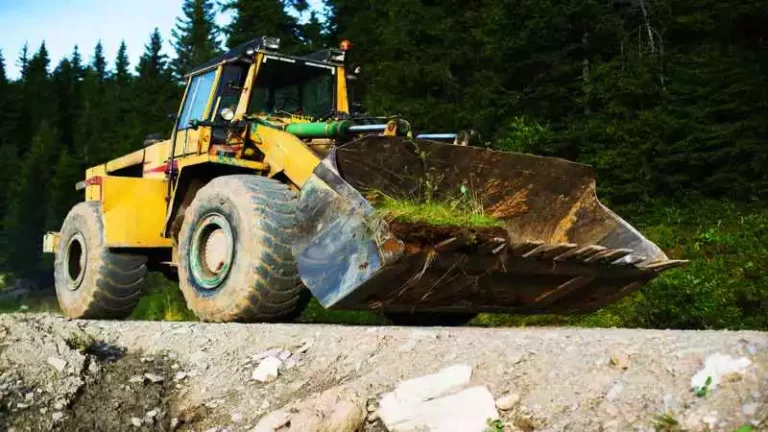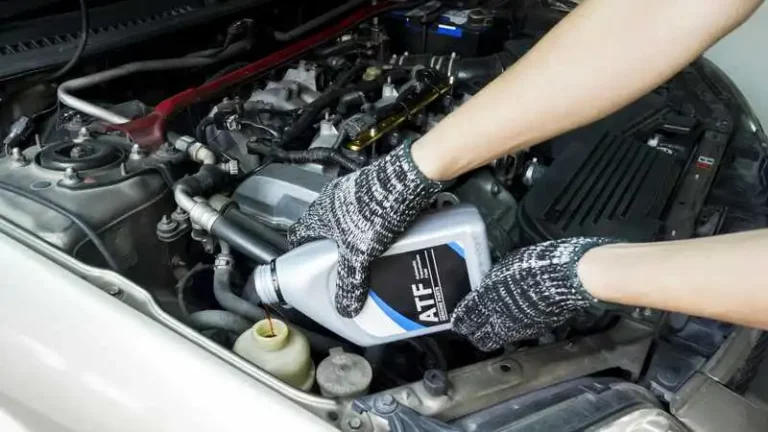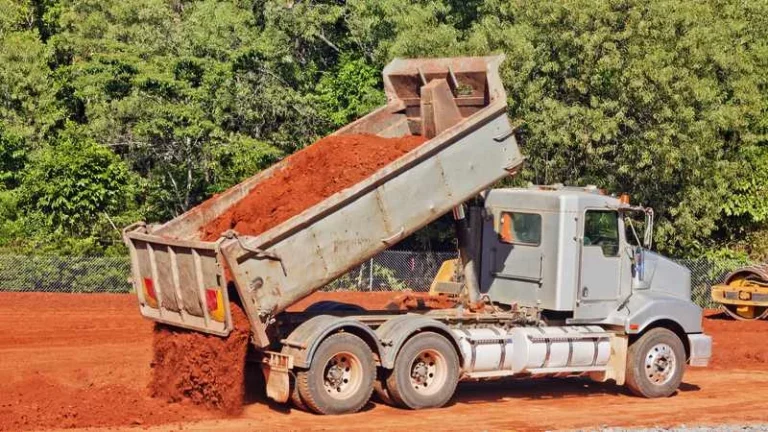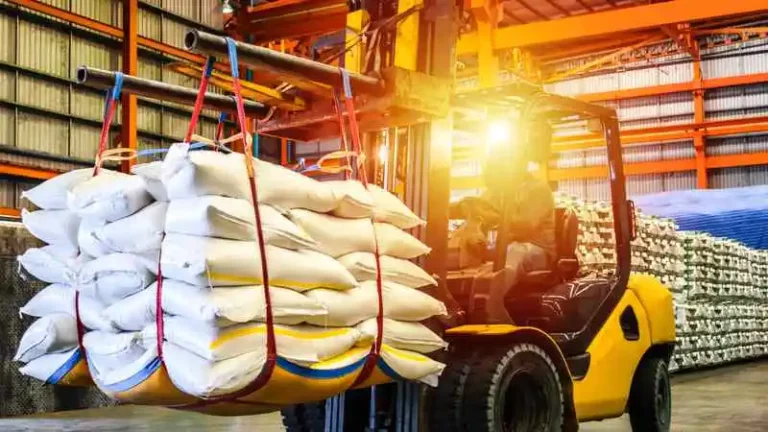In the world of heavy machinery, where power and precision reign supreme, groundbreaking technology has emerged as the driving force behind countless feats of engineering excellence: hydraulics.
The fusion of mechanical engineering and fluid power has revolutionized the capabilities of heavy equipment machines, propelling industries such as construction, mining, and manufacturing to new heights. With their unrivaled strength and adaptability, these hydraulic marvels have become power pioneers, facilitating seamless operations and delivering unparalleled performance.
In this article, we delve into heavy equipment machines that harness the might of hydraulics, uncovering the intricate workings, remarkable applications, and the immense impact they have on shaping our modern world.
Introduction to Hydraulic Machinery
Hydraulic machinery plays a crucial role in various industries, offering a powerful and efficient means of transmitting energy using fluid power. This branch of engineering encompasses a wide range of devices and systems that utilize fluid mechanics principles to generate, control, and transmit forces and motion. Hydraulic machinery finds applications in diverse fields such as construction, manufacturing, aerospace, and transportation, providing reliable and precise power transmission for numerous tasks.
The basic principle behind hydraulic machinery is Pascal’s law, which states that when pressure is applied to a fluid in a confined space, it is transmitted equally in all directions. This principle forms the foundation for hydraulic systems, where a fluid, usually oil or water, is utilized as the medium for power transmission.
By controlling the flow and pressure of the fluid, hydraulic machinery can generate forces and motions, enabling the operation of heavy machinery, lifts, cranes, presses, and more. The versatility, high power density, and precise control offered by hydraulic machinery make it an indispensable tool in various industries, revolutionizing how work is done and enhancing productivity and efficiency.
Types of Heavy Equipment That Use Hydraulics
Hydraulic systems are extensively used in various heavy equipment, providing the necessary power and control for efficient operations. These systems are employed in various types of machinery to facilitate lifting, digging, pushing, and other heavy-duty tasks. Some common examples of heavy equipment that rely on hydraulics include excavators, bulldozers, cranes, loaders, forklifts, and hydraulic presses.
These machines utilize hydraulic cylinders, pumps, valves, and motors to generate and control the forces required for their specific applications. Hydraulics in heavy equipment ensures robust performance, precise control, and enhanced productivity in demanding industries such as construction, mining, forestry, and material handling.
Excavators
Excavators are heavy equipment machines widely used in construction, mining, and other industries for digging, trenching, material handling, and demolition. These versatile machines rely on hydraulic systems to perform their various functions with precision and power. Excavators consist of a rotating platform, known as the house, which is mounted on an undercarriage with tracks or wheels for mobility. The house supports the hydraulic arm, also called the boom, equipped with a bucket or an attachment at the end.
Hydraulic cylinders in the excavator’s arm provide the force and motion required for digging and lifting operations. Hydraulic fluid pressurized by hydraulic pumps actuates these cylinders. The operator controls the movement and positioning of the arm and bucket using hydraulic valves and joysticks, allowing for precise and efficient excavation. Excavators often feature multiple hydraulic circuits, enabling the simultaneous operation of various attachments, such as hammers, grapples, and buckets, expanding their versatility and productivity.
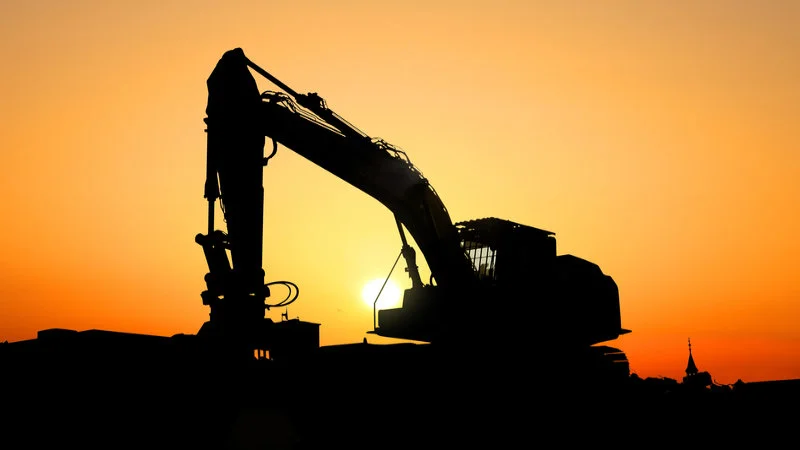
The hydraulic system of an excavator offers several advantages. Firstly, it provides exceptional power and digging force, allowing the machine to handle tough materials and challenging terrains. The hydraulic system also enables precise control and maneuverability, allowing operators to easily perform intricate operations and work in confined spaces.
Additionally, hydraulic excavators offer quick cycle times, as the hydraulic system allows for swift movements and efficient digging and dumping of materials. The durability and reliability of hydraulic components make excavators suitable for demanding tasks and ensure their longevity in harsh working conditions.
Bulldozers
Bulldozers are robust and powerful heavy equipment machines primarily used in the construction and mining industries. They are designed to push and move large quantities of soil, rubble, other materials, and level surfaces. One of the key components that enable the exceptional pushing force of bulldozers is the hydraulic system. The hydraulic system in bulldozers consists of hydraulic cylinders, pumps, valves, and fluid reservoirs.
The hydraulic cylinders in bulldozers are responsible for controlling the movement of the blade, the primary attachment at the front of the machine. These cylinders allow the operator to raise, lower, tilt, and angle the blade, providing precise control over the pushed material. The hydraulic pump generates the necessary hydraulic pressure while the valves regulate the flow of hydraulic fluid to the cylinders. This combination of hydraulic components allows bulldozer operators to manipulate the blade with great force and accuracy, enabling efficient earthmoving and grading operations.

One of the significant advantages of using hydraulic systems in bulldozers is their versatility. With the ability to adjust the blade’s height, angle, and tilt, bulldozers can handle various tasks, such as pushing soil, leveling terrain, and creating slopes. The hydraulic system also allows for quick and smooth blade movements, ensuring effective material displacement and minimizing downtime.
Moreover, the power and control provided by hydraulics enable bulldozers to operate in challenging conditions, including uneven terrain and tough soils. This versatility, combined with the durability and reliability of hydraulic components, makes bulldozers indispensable machines for a wide range of construction and mining projects.
Graders
Graders, also known as motor graders, are heavy equipment machines commonly used in road construction, maintenance, and other applications requiring precision grading and surface leveling. These machines are equipped with a long, adjustable blade mounted between the front and rear axles. The blade can be angled and rotated, allowing the operator to control the graded material’s depth and slope. The hydraulic system plays a critical role in the operation of graders, providing the necessary power and control for efficient grading.
The hydraulic system in graders consists of hydraulic cylinders, pumps, valves, and a fluid reservoir. Hydraulic cylinders are responsible for moving and adjusting the blade. By extending or retracting the hydraulic cylinders, the operator can control the blade’s height, angle, and rotation to achieve the desired grading results. The hydraulic pumps generate the hydraulic pressure required to actuate the cylinders while the valves regulate the flow of hydraulic fluid. The operator can manipulate these hydraulic controls from the operator’s cabin, allowing for precise adjustments and smooth grading operations.
One of the primary advantages of using hydraulic systems in graders is the ability to make real-time adjustments to the blade position. The operator can fine-tune the grading process based on the conditions of the road or surface being worked on. Hydraulic systems provide the necessary power and responsiveness to handle different soil types and materials. Additionally, the hydraulic system enables graders to perform other functions, such as articulating the frame, steering, and controlling the speed of the machine.
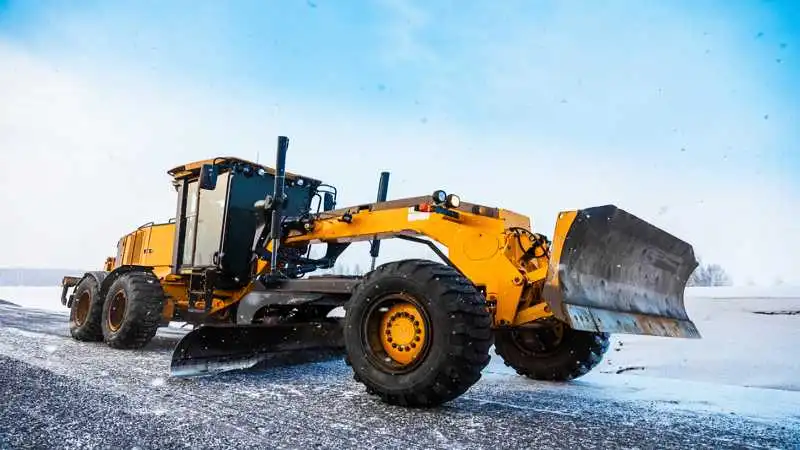
This versatility and control allow operators to achieve accurate and consistent grading results, ensuring the proper alignment and smoothness of roads, runways, and other surfaces. The reliability and durability of hydraulic components further contribute to graders’ overall performance and efficiency in construction and maintenance projects.
Dump Trucks
Dump trucks are heavy-duty vehicles for transporting and unloading bulk materials, such as gravel, sand, dirt, or construction debris. They are widely used in construction, mining, and other large-scale material-handling industries. Hydraulic systems play a crucial role in the operation of dump trucks, providing the power and control necessary for lifting and tilting the truck bed to unload the materials.
The hydraulic system in dump trucks typically includes a hydraulic cylinder, hydraulic pump, valves, and a fluid reservoir. The hydraulic cylinder is mounted underneath the truck bed and is responsible for lifting and tilting the bed to dump the load. The hydraulic pump generates pressure, which is transmitted to the hydraulic cylinder to extend or retract. Valves control the flow of hydraulic fluid, enabling precise control over the lifting and tilting movements. Dump truck operators can activate the hydraulic controls from the driver’s cabin, allowing for efficient and safe unloading of materials at the desired location.
The use of hydraulic systems in dump trucks offers several advantages. Firstly, the hydraulic system provides immense lifting force, enabling dump trucks to easily handle heavy loads. The controlled and smooth operation of the hydraulic cylinder allows for the precise positioning of the truck bed during the unloading process.
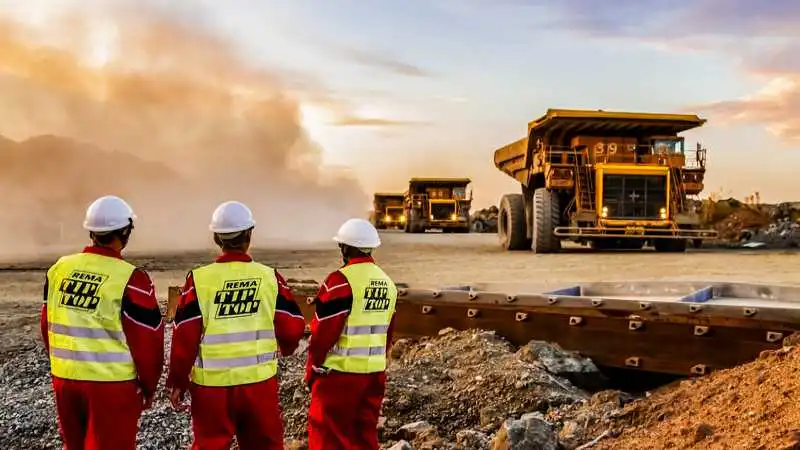
Additionally, the hydraulic system allows for quick cycle times, as the bed can be raised and tilted rapidly, facilitating efficient and productive material handling. The reliability and durability of hydraulic components ensure dump trucks’ long-term performance and resilience in demanding work environments.
Loaders
Loaders, or front-end or wheel loaders, are heavy equipment machines commonly used in construction, mining, and agricultural applications. These versatile machines are designed for loading, carrying, and transporting materials, such as soil, gravel, rocks, or agricultural products. Loaders utilize hydraulic systems to power and control their lifting, loading, and dumping operations.
The hydraulic system in loaders consists of hydraulic cylinders, pumps, valves, and a fluid reservoir. The primary hydraulic cylinders are located on the arms or booms of the loader. These cylinders are responsible for raising and lowering the loader arms and tilting the attachment, such as a bucket or fork, for material handling. The hydraulic pump generates hydraulic pressure, which is transmitted to the cylinders to extend or retract them. Valves control the flow of hydraulic fluid, allowing operators to precisely control the loader’s lifting, lowering, and tilting movements. This hydraulic system enables loaders to efficiently scoop up and carry large volumes of material and deposit them at the desired location.
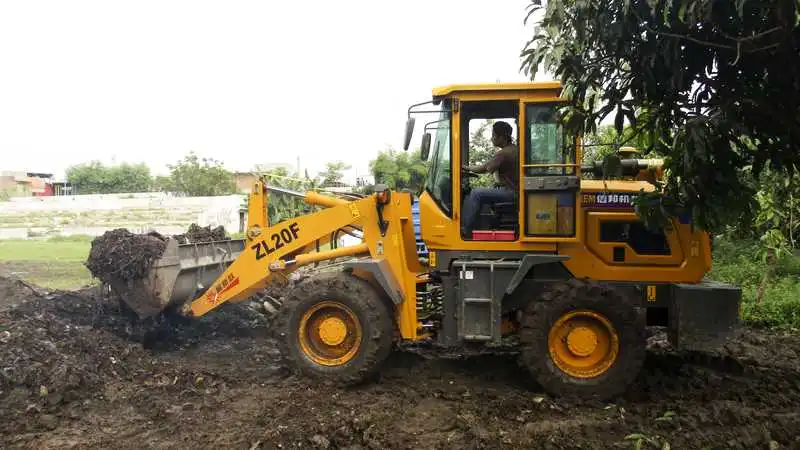
The use of hydraulic systems in loaders offers several advantages. Firstly, hydraulic systems provide high lifting capacity, allowing loaders to easily handle heavy loads. The precise control offered by the hydraulic system enables operators to maneuver and position the load accurately, minimizing the risk of damage or spillage.
Loaders with hydraulic systems can also operate with various attachments, such as buckets, forks, grapples, or snow plows, enhancing their versatility and allowing them to perform various tasks. The durability and reliability of hydraulic components ensure the robust performance of loaders in demanding work environments requiring them to endure heavy loads and rugged conditions.
Cranes
Cranes are essential for lifting and moving heavy loads in construction, manufacturing, and other industries. These machines rely heavily on hydraulic systems to provide the power and control necessary for their lifting and hoisting operations. Hydraulic cranes utilize hydraulic cylinders, pumps, valves, and fluid reservoirs to achieve the required lifting capacity and precise movement.
The crane hydraulic system typically consists of multiple hydraulic cylinders, which act as the primary lifting mechanism. These cylinders are responsible for extending and retracting the crane’s boom, jib, or lattice structure to reach the desired height and radius. The hydraulic pump generates pressure, which is transmitted to the hydraulic cylinders to lift and lower the load. Valves control the flow of hydraulic fluid, enabling operators to precisely control the crane’s lifting, lowering, swinging, and slewing movements. The hydraulic system allows cranes to easily handle heavy loads and offers precise control for positioning the load accurately.
One of the key advantages of hydraulic systems in cranes is their high lifting capacity. Hydraulic cranes can lift extremely heavy loads, making them suitable for various lifting tasks, from small-scale construction projects to large industrial applications. The hydraulic system also provides smooth and controlled movements, allowing operators to handle loads precisely and minimize the risk of accidents or damage.
Additionally, hydraulic cranes can be equipped with various attachments and accessories, such as hooks, grabs, or specialized lifting devices, further expanding their versatility and capabilities. The reliability and durability of hydraulic components ensure the safe and efficient operation of cranes, making them indispensable equipment for lifting and material handling operations.
Forklifts
Forklifts, or lift or forklift trucks, are compact and versatile industrial vehicles for lifting, transporting, and stacking materials in warehouses, distribution centers, and manufacturing facilities. These machines heavily rely on hydraulic systems to provide the power and control necessary for their lifting and maneuvering capabilities. Hydraulic forklifts utilize hydraulic cylinders, pumps, valves, and fluid reservoirs to perform their various material handling tasks.
The hydraulic system in forklifts plays a critical role in the operation of the lifting mechanism. Hydraulic cylinders are used to raise and lower the forks or lifting mast of the forklift. These cylinders extend or retract to adjust the height of the forks and allow for easy picking up and placing of loads. The hydraulic pump generates pressure, which is transmitted to the cylinders to lift and lower the forks. Valves control the flow of hydraulic fluid, allowing operators to precisely control the lifting and lowering movements of the forklift. This hydraulic system enables forklifts to handle various loads with different weights and sizes, providing efficient and flexible material handling capabilities.
The use of hydraulic systems in forklifts offers several advantages. Firstly, hydraulic forklifts provide excellent lifting capacity, allowing them to handle heavy loads efficiently. The hydraulic system enables smooth and controlled movements, allowing forklift operators to accurately position loads, stack pallets, and navigate narrow aisles precisely. Hydraulic systems also enable quick lifting and lowering cycles, contributing to the productivity of material handling operations.
Additionally, the versatility of hydraulic forklifts is enhanced by the availability of various attachments, such as side shifters, clamps, or rotators, which can be easily installed to expand the capabilities of the forklift. The reliability and durability of hydraulic components ensure the safe and efficient operation of forklifts, making them indispensable equipment in warehouses and industrial settings.
Compactors
Compactors, or vibratory compactors or rollers, are machines used for compacting and compressing soil, asphalt, or other materials in construction, road building, and landscaping projects. These machines rely on hydraulic systems to provide the necessary power and control for their compaction operations. Hydraulic compactors utilize hydraulic cylinders, pumps, valves, and fluid reservoirs to achieve the desired compaction force and maneuverability.
The hydraulic system in compactors is primarily responsible for generating the vibratory force and controlling the movement of the machine. Hydraulic cylinders, often located in the drum or plate of the compactor, produce the vibratory action that helps compact the material. The hydraulic pump generates pressure, which is transmitted to the hydraulic cylinders to create the necessary vibrations. Valves control the flow of hydraulic fluid, allowing operators to adjust the intensity and frequency of the vibrations. This hydraulic system enables compactors to effectively compact and densify soil or asphalt, improving the stability and durability of the surfaces.
One of the significant advantages of hydraulic systems in compactors is their ability to generate high compaction forces. The hydraulic system allows for precise control over the vibration intensity, allowing operators to adjust the compaction process based on the type of material and desired compaction results. The smooth and controlled vibratory action helps evenly distribute the compaction force, ensuring consistent and uniform compaction across the surface. Hydraulic compactors also offer excellent maneuverability and control, allowing operators to navigate around obstacles and compact hard-to-reach areas effectively.
The reliability and durability of hydraulic components in compactors make them suitable for demanding construction and road-building projects. Hydraulic systems are designed to withstand heavy loads, shocks, and vibrations, ensuring the machine’s longevity. Additionally, the versatility of hydraulic compactors is enhanced by the availability of different drum or plate attachments that can be easily swapped to accommodate various compaction requirements.
Telehandlers
Telehandlers, telescopic handlers, or telehandler forklifts are versatile machines widely used in construction, agriculture, and industrial settings. These machines combine the functionality of a forklift and a telescopic boom, allowing them to lift, extend, and place materials with precision and reach. Telehandlers rely on hydraulic systems to provide the power and control required for their lifting, extension, and maneuvering capabilities.
The hydraulic system in telehandlers enables the lifting and extending functions of the machine. Hydraulic cylinders located in the telescopic boom provide the necessary force to extend and retract the boom, allowing operators to reach higher and farther distances. The hydraulic pump generates pressure transmitted to the cylinders to extend or retract the boom sections. Valves control the flow of hydraulic fluid, enabling operators to precisely control the telehandler’s lifting, lowering, and extending movements. This hydraulic system allows telehandlers to handle loads at various heights and distances, making them ideal for loading/unloading, material placement, and reaching over obstacles.
One of the key advantages of hydraulic systems in telehandlers is their versatility and adaptability. The hydraulic system allows for smooth and controlled movement of the telescopic boom, providing operators with precise positioning and maneuverability. Telehandlers can lift and place loads at different heights and reach across obstacles, making them valuable in construction sites or agricultural operations where flexibility is essential. Hydraulic systems also enable quick attachment changes, allowing operators to switch between forks, buckets, or other attachments to suit specific tasks. This versatility enhances the productivity and efficiency of telehandlers in various applications.
The reliability and durability of hydraulic components in telehandlers ensure their performance in demanding environments. The hydraulic system is designed to handle heavy loads, providing stability and safety during lifting operations. The system’s robustness also allows telehandlers to withstand the rigors of construction sites or agricultural work. The ease of operation and precise control provided by the hydraulic system makes telehandlers efficient and reliable machines for material handling and placement tasks.
How Hydraulic Systems Work
Hydraulic systems work based on Pascal’s law, which states that when pressure is applied to a fluid in a confined space, it is transmitted equally in all directions. Hydraulic systems utilize this principle to transmit and control power using a fluid, typically oil or water, as the medium.
The basic components of a hydraulic system include a hydraulic pump, hydraulic fluid, hydraulic cylinders, valves, and pipes or hoses for fluid transmission. Here’s how the system operates:
- Hydraulic Pump: The hydraulic pump is driven by an external power source, such as an electric motor or an engine. It draws in hydraulic fluid from a reservoir and pressurizes it, creating flow and pressure within the system.
- Hydraulic Fluid: The pressurized hydraulic fluid, usually oil, is stored in a reservoir and circulated throughout the system. It acts as the medium for transmitting power.
- Hydraulic Cylinders: Hydraulic cylinders convert hydraulic pressure into linear mechanical force and motion. They consist of a cylindrical barrel, a piston, and a piston rod. When hydraulic fluid is directed into the cylinder, it pushes against the piston, causing the piston rod to extend or retract, generating force and motion.
- Valves: Valves control the flow and direction of hydraulic fluid within the system. There are various types of valves, including control valves, relief valves, and check valves. Control valves regulate the flow of hydraulic fluid to the desired components, while relief valves protect the system from overpressure by releasing excess fluid. Check valves to ensure that fluid flows in only one direction.
- Pipes or Hoses: Pipes or hoses transmit hydraulic fluid between system components. They provide a pathway for the fluid to flow from the hydraulic pump to the desired hydraulic cylinders or other hydraulic devices.
When the hydraulic pump generates pressure, it forces hydraulic fluid into the hydraulic cylinders through the appropriate control valves and pipes. This pressure acts on the pistons within the cylinders, causing them to move and exert force. The force generated by the hydraulic cylinders can be used to perform various tasks, such as lifting, pushing, rotating, or controlling the movement of mechanical components in machinery or equipment.
The control valves in the system enable operators to precisely control the flow of hydraulic fluid, allowing for smooth and accurate operation. By adjusting the valves, operators can regulate the speed, direction, and force of the hydraulic cylinders, providing control over the mechanical operations of the system.
Advantages of Using Hydraulics in Heavy Equipment Machines
Using hydraulics in heavy equipment machines offers several advantages that contribute to their efficiency, productivity, and reliability. Some key advantages include:
- High Power Density: Hydraulic systems provide a high power-to-weight ratio, allowing heavy equipment machines to generate substantial force and perform demanding tasks. Hydraulic systems can deliver significant power output, enabling machines to handle heavy loads and perform strenuous operations efficiently.
- Precise Control: Hydraulic systems control force, speed, and motion. By adjusting valves and regulating the flow of hydraulic fluid, operators can finely control the movement of hydraulic cylinders, allowing for accurate positioning, smooth operation, and controlled acceleration and deceleration. This precision control enhances safety, productivity, and overall operational efficiency.
- Versatility and Flexibility: Hydraulic systems provide flexibility in heavy equipment machines by allowing various functions and attachments. Using different hydraulic attachments, such as buckets, forks, grapples, or hammers, the same machine can perform various tasks, maximizing its versatility and reducing the need for multiple specialized machines.
- Durability and Reliability: Hydraulic components are designed to withstand heavy loads, shocks, and vibrations commonly encountered in heavy equipment applications. Hydraulic systems are built to be robust and durable, ensuring reliable performance in challenging working conditions. They are also less prone to damage from overloading or sudden impacts, contributing to the longevity of the equipment.
- Quick Response and Rapid Operation: Hydraulic systems provide quick response times, allowing heavy equipment machines to start, stop, and change direction rapidly. This feature is particularly valuable in applications where time is critical, such as in construction or material handling operations.
- Safety and Load Control: Hydraulic systems offer excellent load control and safety features. The precise control over force and motion allows for smooth and controlled lifting, lowering, and positioning of heavy loads, minimizing the risk of accidents or damage. Safety features such as pressure relief valves help prevent overloading and protect the equipment from excessive pressure.
The advantages of using hydraulics in heavy equipment machines contribute to their enhanced performance, efficiency, and versatility. Hydraulic systems enable precise control, high power density, and reliable operation, making them indispensable in various industries where heavy machinery is employed.

